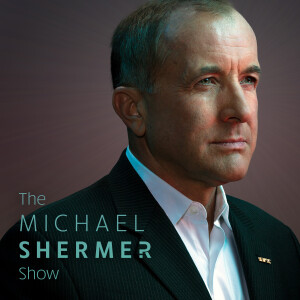
294. Sabine Hossenfelder — Existential Physics: A Scientist’s Guide to Life’s Biggest Questions
 2022-08-23
2022-08-23
What is time? Does the past still exist? How did the universe begin and how will it end? Do particles think? Was the universe made for us? Why doesn’t anyone ever get younger? Has physics ruled out free will? Will we ever have a theory of everything? According to Sabine Hossenfelder, it is not a coincidence that quantum entanglement and vacuum energy have become the go-to explanations of alternative healers, or that people believe their deceased grandmother is still alive because of quantum mechanics. Science and religion have the same roots, and they still tackle some of the same questions: Where do we come from? Where do we go to? How much can we know? The area of science that is closest to answering these questions is physics. Over the last century, physicists have learned a lot about which spiritual ideas are still compatible with the laws of nature. Not always, though, have they stayed on the scientific side of the debate.
Shermer and Hossenfelder also discuss: theories of everything • quantum flapdoodle • Is math all there is? Is math universal? • Uniformitarianism and the laws of nature • theories of aging • Emergent properties, or why we are not just a bag of atoms • Is knowledge predictable? • Free will and determinism from a physicist’s perspective • Do copies of us exist? Could they ever? • Consciousness and computability • Does the universe think? • Why is there something rather than nothing? • What is the purpose of life, the universe, and everything?
Sabine Hossenfelder is a research fellow at the Frankfurt Institute for Advanced Studies, Germany, and has published more than eighty research articles about the foundations of physics, including quantum gravity, physics beyond the standard model, dark matter, and quantum foundations. She has written about physics for a broad audience for 15 years and is the creator of the popular YouTube channel “Science without the Gobbledygook.” Her writing has been published in New Scientist, Scientific American, the New York Times, and the Guardian (London). Her first book, Lost in Math: How Beauty Leads Physics Astray, appeared in 2018.
More Episodes
 2023-12-16
2023-12-16
 2023-12-02
2023-12-02
 2023-11-22
2023-11-22
 2023-11-18
2023-11-18
 2023-11-15
2023-11-15
 2023-11-11
2023-11-11
Create your
podcast in
minutes
- Full-featured podcast site
- Unlimited storage and bandwidth
- Comprehensive podcast stats
- Distribute to Apple Podcasts, Spotify, and more
- Make money with your podcast
It is Free
- Privacy Policy
- Cookie Policy
- Terms of Use
- Consent Preferences
- Copyright © 2015-2024 Podbean.com




